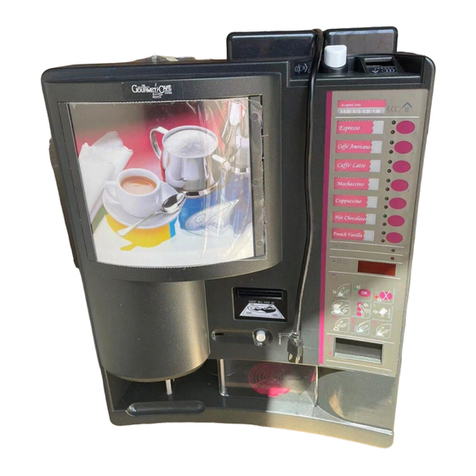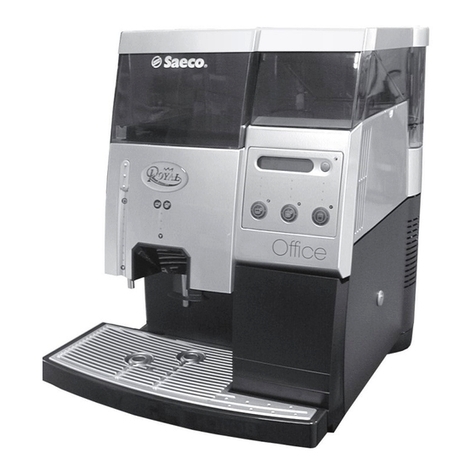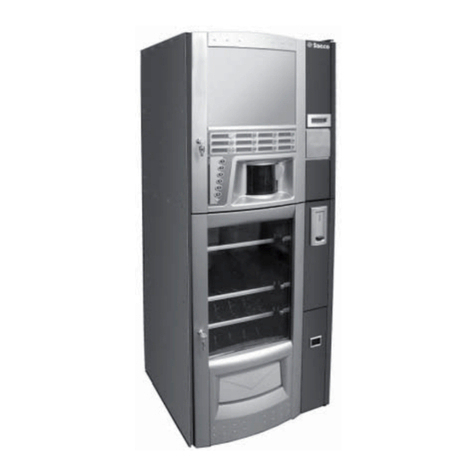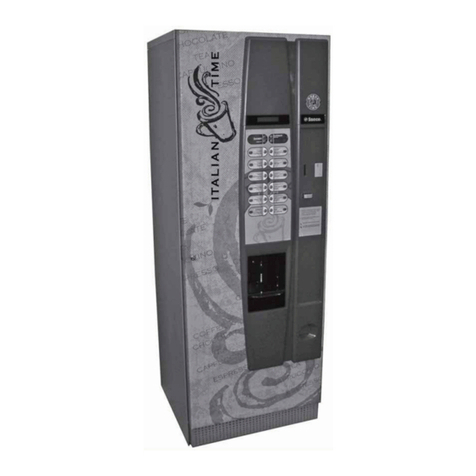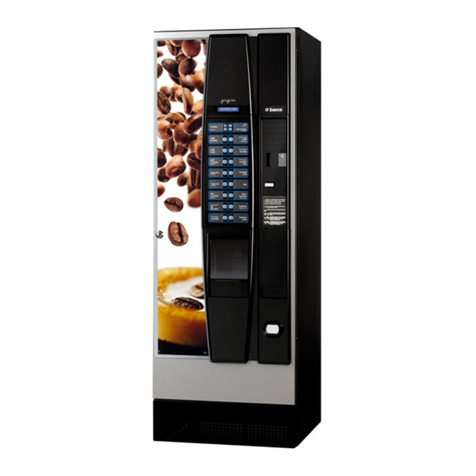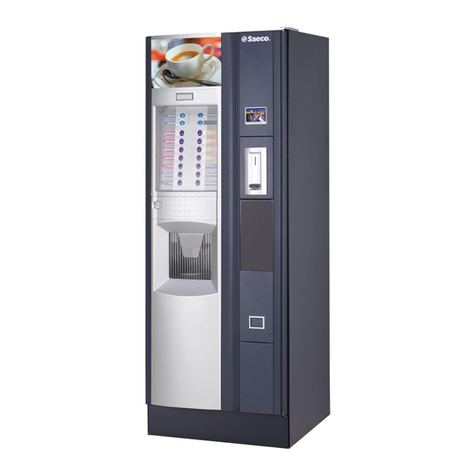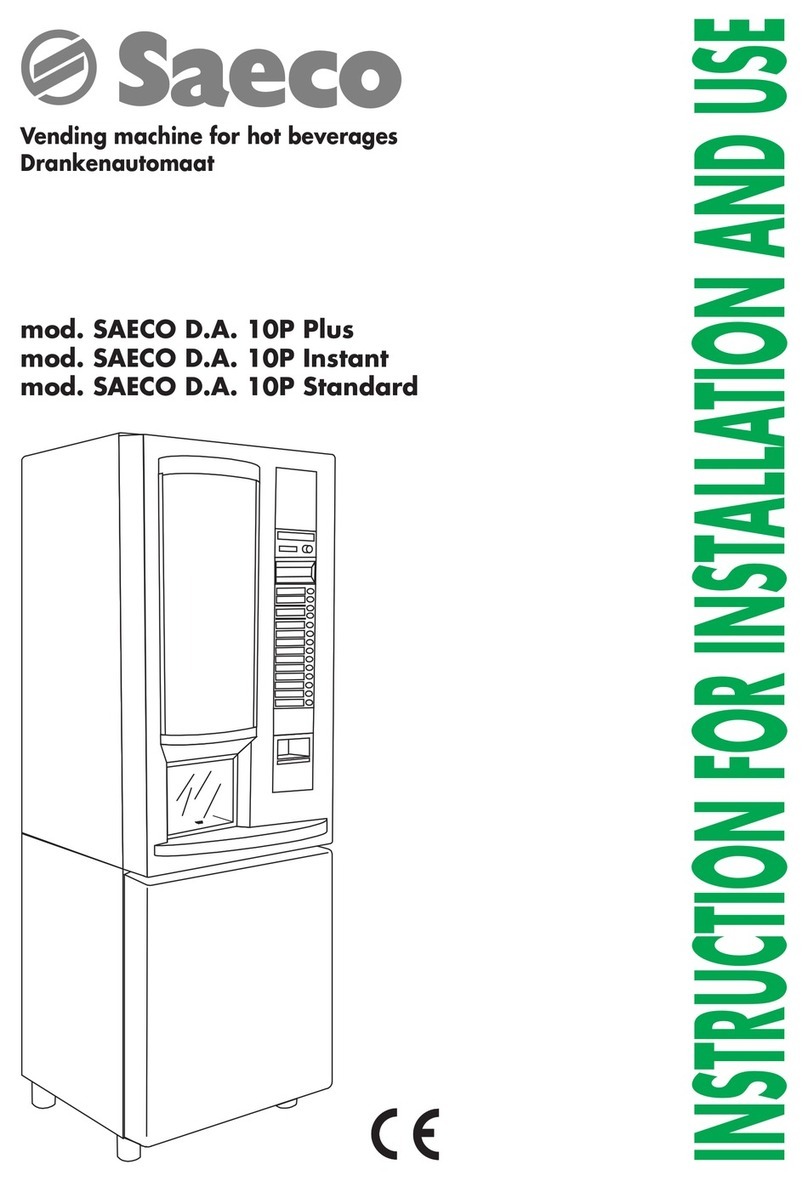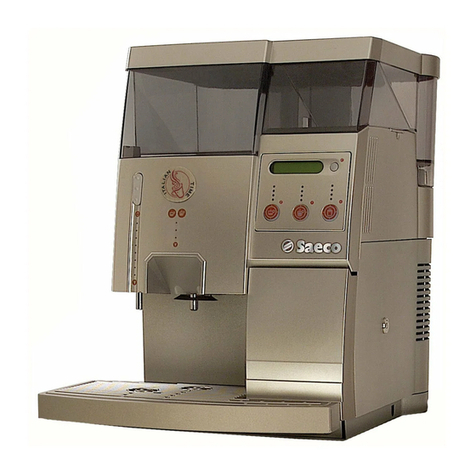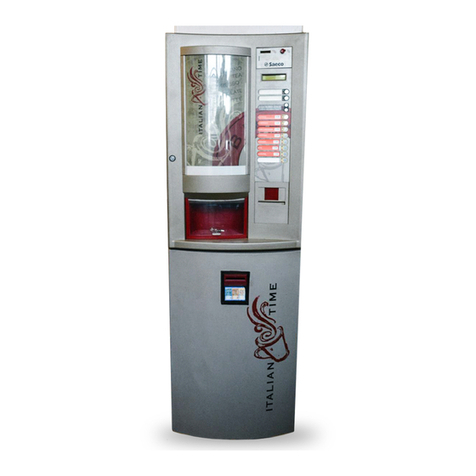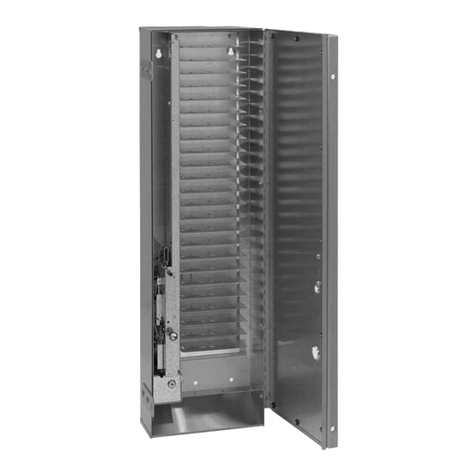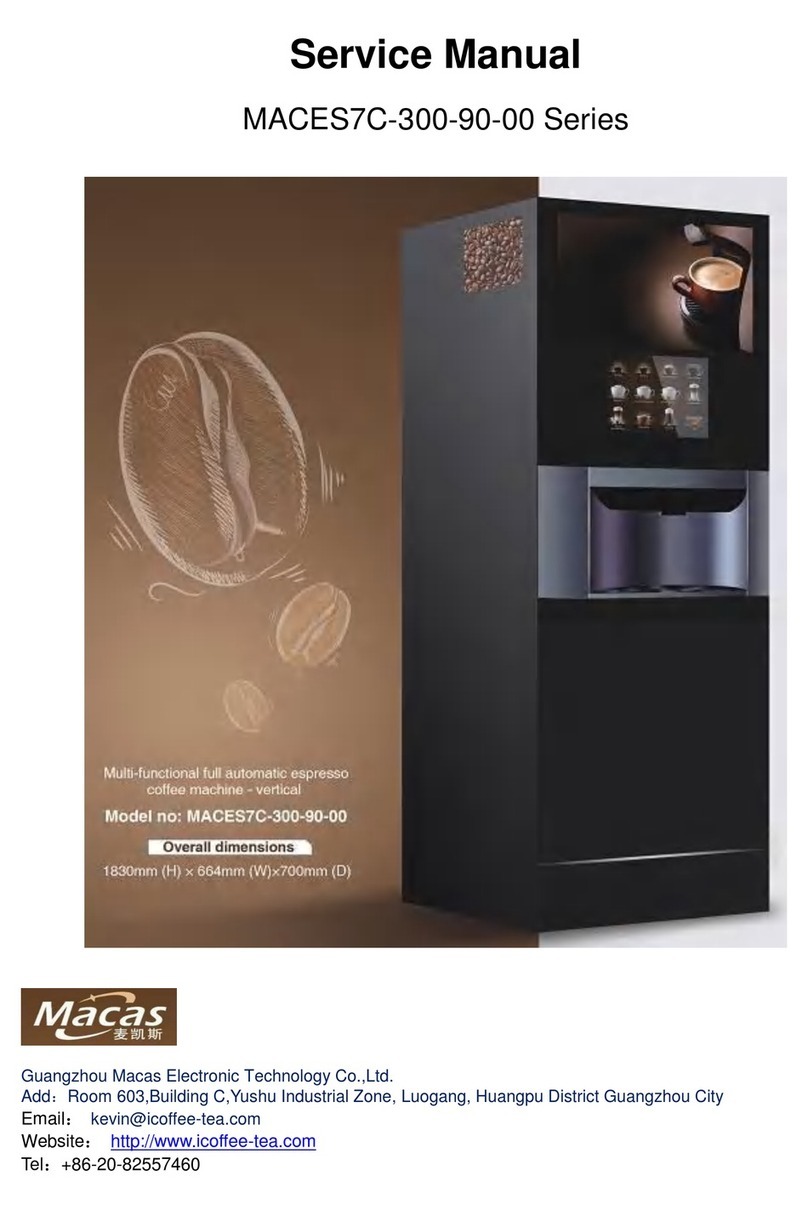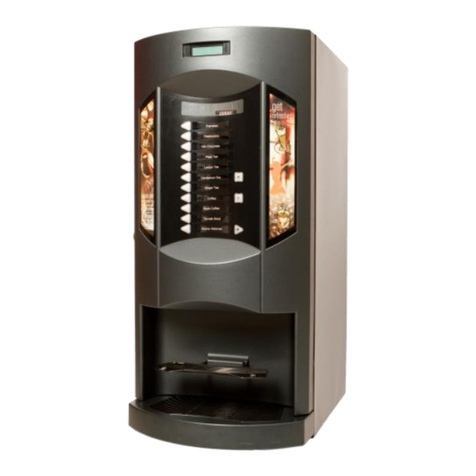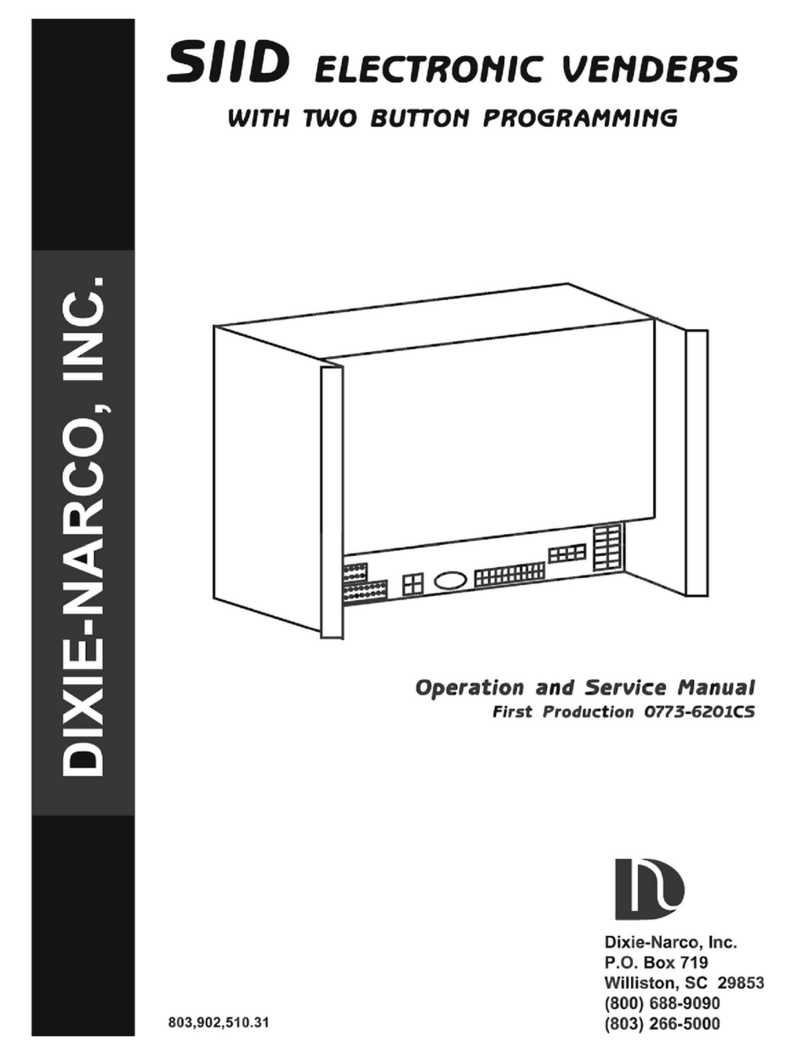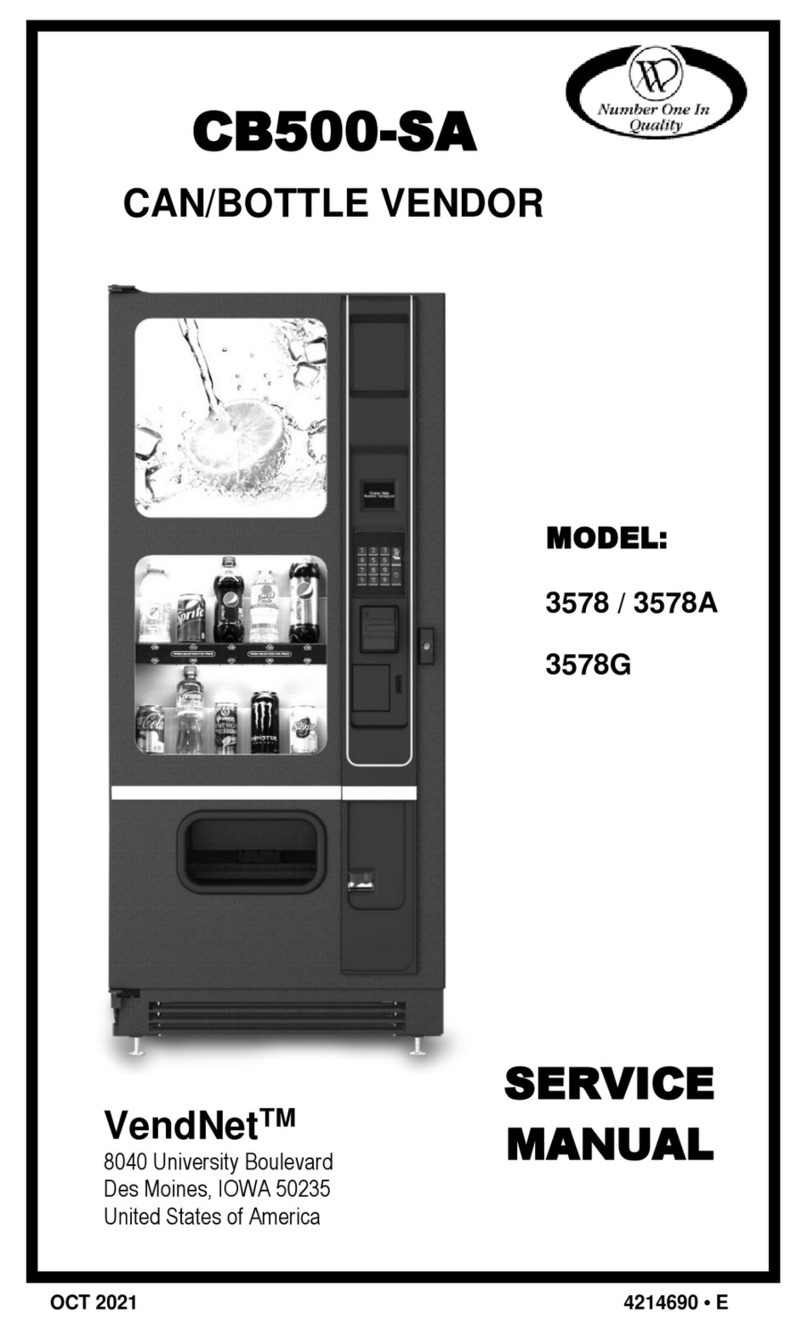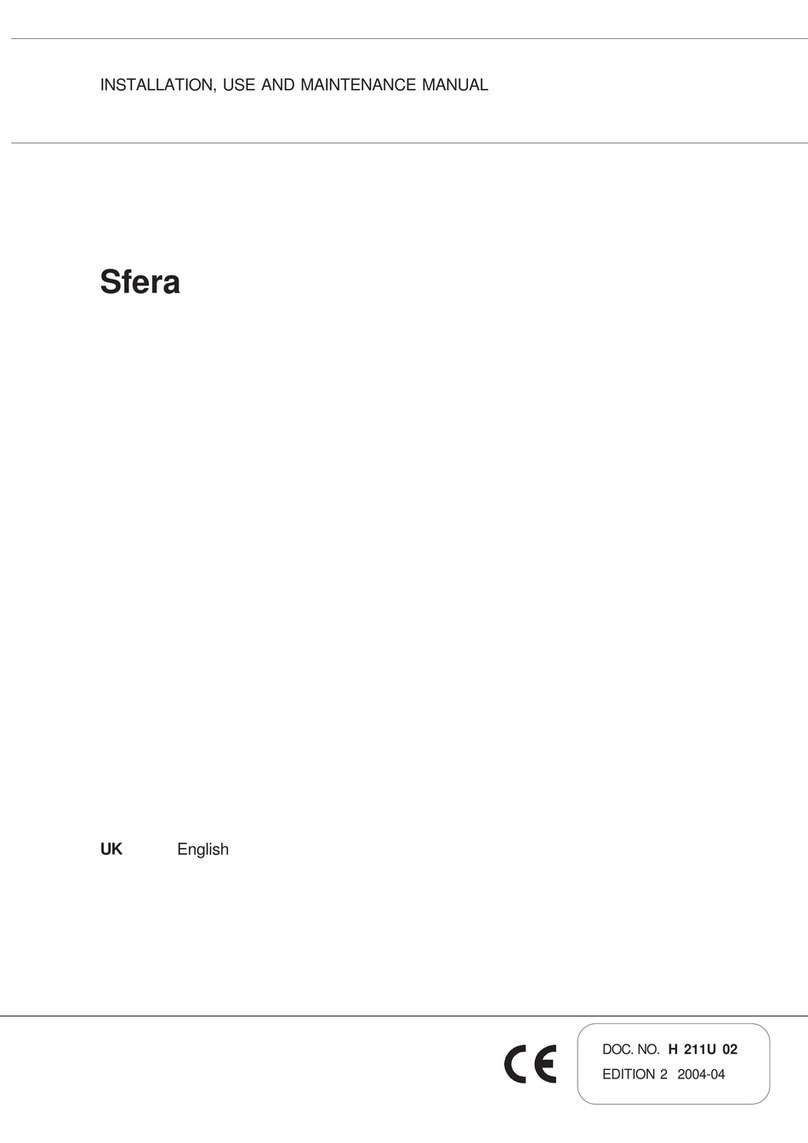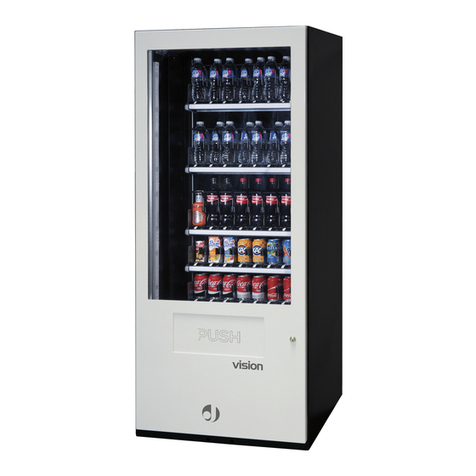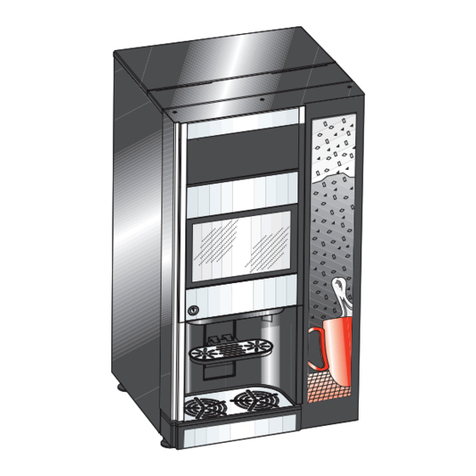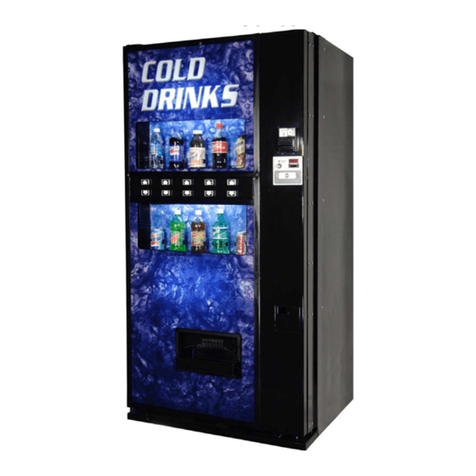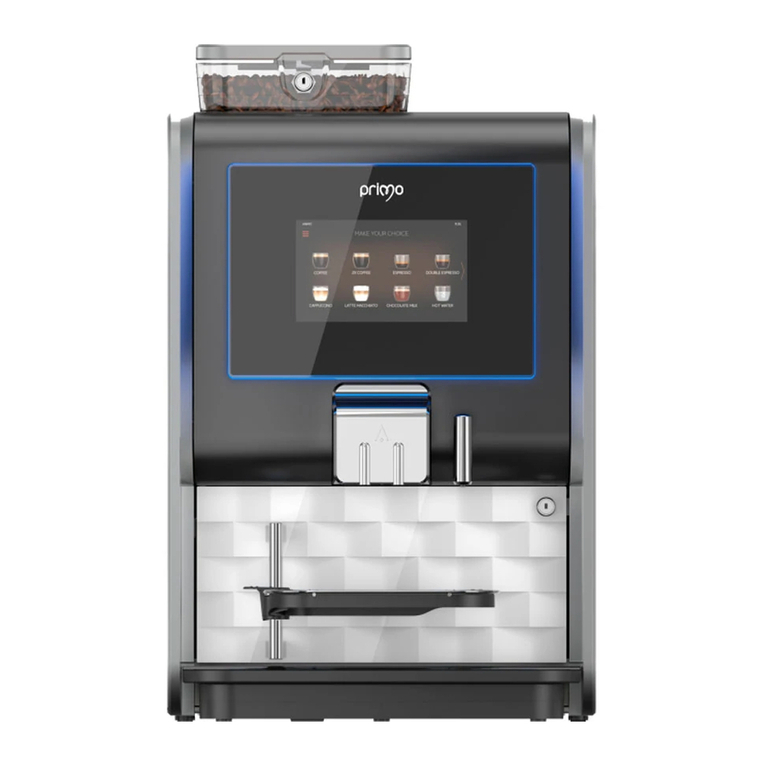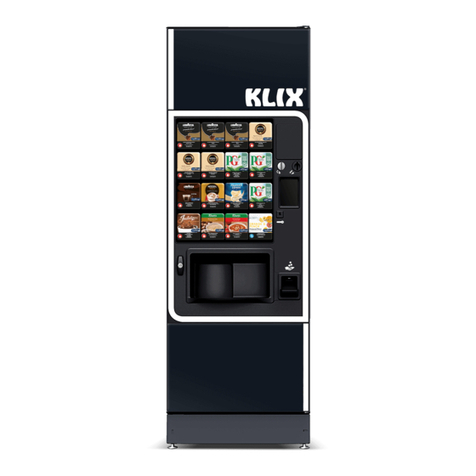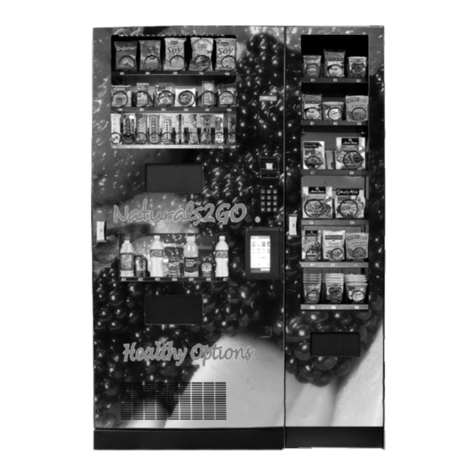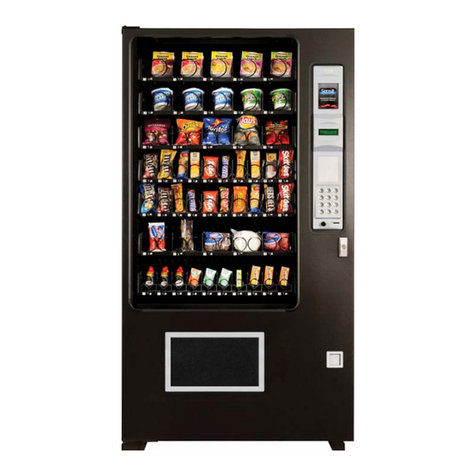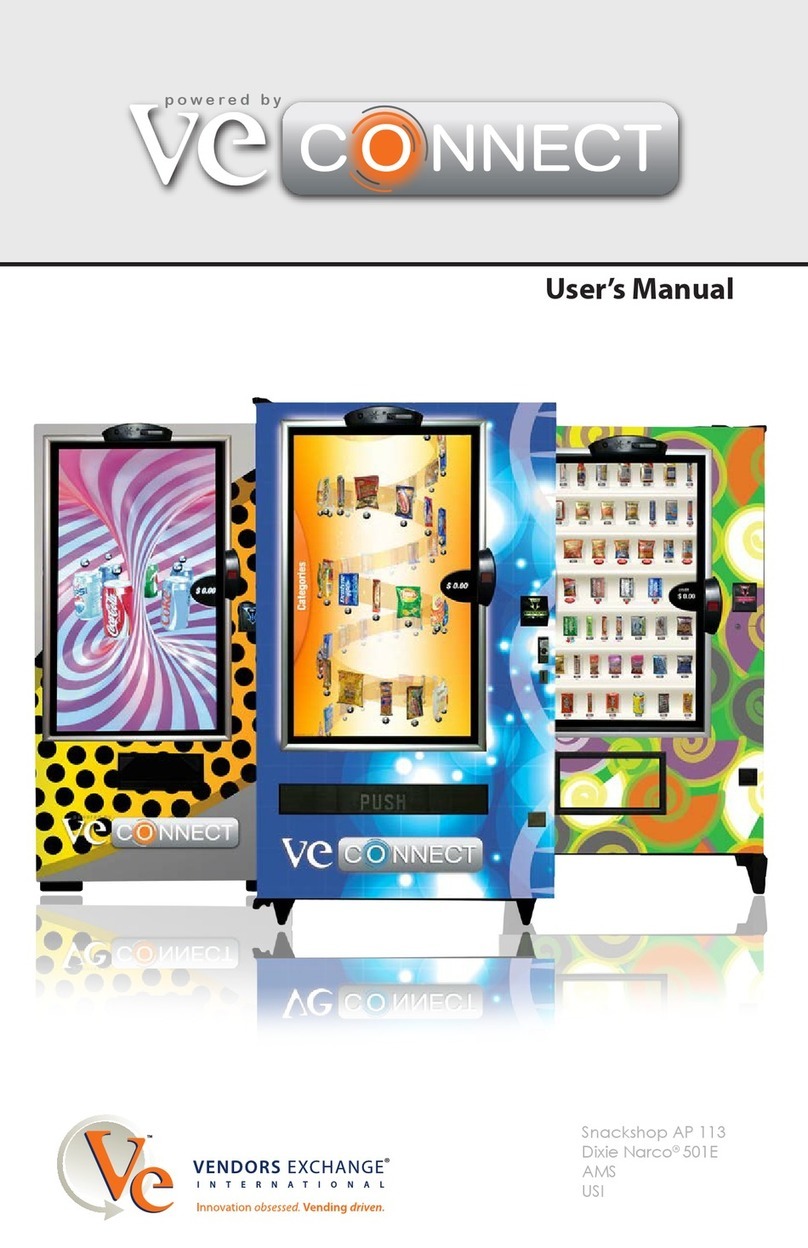
5
English
CONTENTS
MAIN PARTS ATLANTE ................................................... 2
MAIN PARTS ATLANTE ................................................... 3
MAIN PARTS ATLANTE ................................................... 4
CONTENTS .................................................................... 5
1 INTRODUCTION TO THE MANUAL ............................ 6
1.1 Introduction...............................................................6
1.2 Symbols used............................................................6
2 INFORMATION ON THE VENDING MACHINE ............ 6
2.1 Information for the Maintenance Technician ....................6
2.2 Description and intended use .......................................7
2.3 Vending Machine Identification ....................................7
2.4 Technical specifications Atlante ....................................8
3 SAFETY.................................................................... 9
3.1 Introduction...............................................................9
3.2 General safety regulations ...........................................9
3.3 Operators’ requirements..............................................9
3.4 Safety devices.........................................................10
3.5 Residual risks ..........................................................10
4 HANDLING AND STORAGE .................................... 11
4.1 Unloading and handling ...........................................11
4.2 Storage .................................................................11
5 INSTALLATION....................................................... 12
5.1 Important................................................................12
5.2 Unpacking and positioning........................................12
5.3 Use of different-sized stirrers .......................................14
5.4 Label application.....................................................15
5.5 Fitting the coffee grounds bag ....................................19
5.6 Fitting the payment systems ........................................19
5.7 Connection to water mains........................................20
5.8 Connection to the electric network...............................20
6 CONTROLS DESCRIPTION ....................................... 21
6.1. Display ..................................................................21
6.2. Keypad .................................................................21
6.3. Key description in standard operation mode .................21
6.4. CPU card keys ........................................................21
7 SUPPLY AND STARTING UP .................................... 22
7.1 Container supply (Instant)...........................................22
7.2 Container supply (Single Grinder) ...............................22
7.3 Container supply (Double Grinder) ..............................22
7.3.1 Instant product supply .........................................................23
7.3.2 Sugar supply ....................................................................23
7.3.3 Coffee bean supply ...........................................................23
7.4 Dose calibration ......................................................24
7.5 Coffee grinding calibration........................................24
7.6 Setting the water capacity for instant product solenoid
valves....................................................................24
7.7 Stirrer supply...........................................................25
7.8 Cup supply.............................................................25
7.9 First start-up of the vending machine ............................26
7.10 Water circuit filling...................................................26
7.10.1 Automatic filling of the instant product boiler ...........................26
7.10.2 Filling the coffee boiler manually...........................................27
7.11 Cleaning the parts in contact with foodstuffs..................27
7.12 Use of the vending machine.......................................27
8 PROGRAMMING AND MAINTENANCE MENU ......... 28
8.1 Key description of programming and maintenance
phases...................................................................28
8.2 Programming menu ..................................................28
8.2.1 Entering the programming menu ...........................................28
8.2.2 Structure of the programming menu .......................................29
8.2.3 Description of messages in the programming menu ..................30
8.3 Maintenance menu ..................................................43
8.3.1 Entering the maintenance menu ............................................43
8.3.2 Structure of the maintenance menu ........................................43
8.3.3 Description of messages in the maintenance menu ...................44
8.4
Machine Ready/Free Button
.....................................46
8.5 Reset .....................................................................46
9 OPERATION AND USE ............................................ 46
9.1 Beverage selection...................................................46
10 CLEANING AND MAINTENANCE............................. 47
10.1 General notes for correct operation .............................47
10.2 Cleaning and scheduled maintenance .........................47
10.2.1 Maintenance schedule........................................................47
10.2.2 Drip tray cleaning..............................................................48
10.2.3 Replacement of the coffee ground bag ..................................48
10.2.4 Emptying the fluid discharge tank..........................................48
10.2.5 Cleaning of the coffee brew group .......................................49
10.2.6 Cleaning the instant product dispenser and the mixer................49
10.2.7 Cleaning the dispensing outlet..............................................51
10.2.8 Cleaning the containers ......................................................51
10.2.9 Cleaning the dispensing arm ...............................................53
10.2.10 Cleaning the coffee grinder .................................................53
10.2.11 Cleaning the sugar dispensing channel..................................53
10.2.12 Cleaning the stirrer channel .................................................54
10.3 Non-scheduled maintenance......................................55
10.4 Software update......................................................56
11 DISPLAY MESSAGES............................................... 57
11.1 Messages during operation .......................................57
11.2 Error messages........................................................57
12 STORAGE - DISPOSAL ............................................ 59
12.1 Change of location ..................................................59
12.2 Inactivity and storage periods.....................................59
13 INSTRUCTIONS FOR END-OF-LIFE DISPOSAL TREAT-
MENT.................................................................... 59
